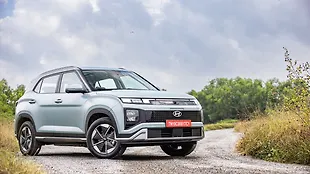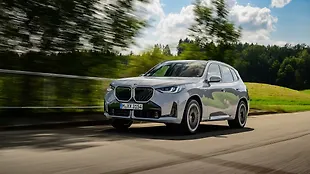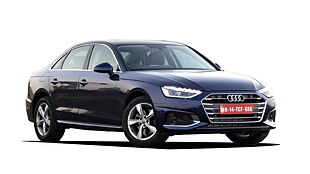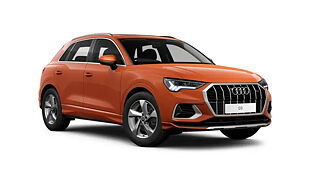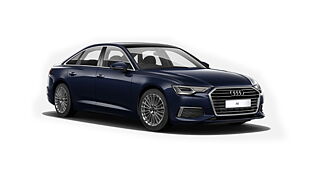Introduction

When Audi launched the A4 last year, it was only offered in the petrol version. But later, in February this year the car-maker also introduced the diesel variant as a part of the India line-up. We’ve already done a road test and reviewed how the diesel A4 fares and you can read about it here. In this edition, we’ve decided to pit the Audi A4 35TDI against its strongest competitor in the segment, BMW’s longstanding 320d, in Sport Line form. Though the BMW 320d has been around for quite some time now, it is still a strong overall package that packs contemporary looks, a strong motor and agile dynamics – enough to plaster a large smile on your face. Surprisingly, it also inched ahead of Merc’s C250d in our last comparison test, for which you can read a sneak preview here.

Let’s get to the point. Exterior-wise, the Audi A4 has built up on the design cues of its predecessor, and now it has an aggressive front fascia with angular headlamps meeting the large grille. There’s no doubt that apart from the nose, the entire car spells a sober look which eventually grows on you with time. On the other hand, the BMW 320d has been around for a while and still looks sporty thanks to the long bonnet, a purposeful shoulder line and those large wide-spoked wheels. We pulled out their prices and found out that the Audi 35TDI retails at Rs 40.2 lakh (ex-showroom Delhi), which is Rs 2.5 lakh cheaper than the BMW 320d Sport Line’s asking price of Rs 42.7 lakh (ex-showroom Delhi). We place all the facts on the table and help you pick a winner here.

Inside Story

The A4 gets a slim dashboard design that has long air-con vents which run from almost end to end. You’ll find nice toggle-like switches to the various functions of the car on the upper centre console which offer a tactile and unique feel. Behind the steering wheel sits one of the most comprehensive instrument consoles ever crafted. This is what Audi calls a ‘Virtual Cockpit’ (like in the R8), and it depicts a whole lot of information including navigation, in a graphic experience unseen till date. And then there’s that exotic yacht-style gear shifter! Quality levels within the cabin are flawless and everything about the design is unmistakeably modern and eye-catching.

The BMW 320d’s dash design was never a strong point and now when compared to the A4, it looks outdated. Nevertheless, quality levels are in keeping with what we have come to expect from the BMW stable and it kind-of makes up for the lack of lustrous appeal. Thankfully, the monotonous amount of black colours splashed in this cabin get a breath of fresh air with the sporty matte red trim that runs along the length of the dashboard, and the door pads. The A4’s front seats are thoroughly enjoyable with plenty of cushioning, thigh support, and lots of contours to hold you in place. It’s the slim dash design that has liberated lots of knee room, and even headroom isn’t a constraint for tall occupants.

The BMW’s front seats are sportier thanks to the contours and electrically adjustable lateral support which allows for a tailor-made snug fit for occupants. Even thigh support is manually adjustable, and there’s lots of headroom and knee-room here too. To put things in perspective, our measurements showed us that while both cars sport the same knee-room in the front, the 320d has slightly more head and shoulder room. At the rear, a tall transmission tunnel and the flatter middle seat translate into these being strict four-seaters. Both cars have rear seats that offer good cushioning and a nice backrest angle. However it’s the A4 that sports more contours and a snug feel when compared to the BMW 320d, which has a much flatter seat.

Furthermore, our measurements revealed that the 320d has much more leg and shoulder room that’s coupled with slightly more thigh support. On the other hand, if you’re tall and going to be primarily chauffeur driven, the A4 offers a bit more headroom than the BMW. If you ask us, we thoroughly liked the flatter rear seats of the 320d, which felt more comfy overall. This brings us to the boot. Both cars have a 480-litre boot that have near identical enclosures. But the real difference lies in the fact that the A4’s spare wheel sits below the boot enclosure, which allows it to swallow a few medium-sized suitcases and some shopping bags. The 320d, however, has its spare wheel eating into the useable space, which makes it useable only for soft bags and one medium-sized suitcase.

More bang for your money?

When it comes to features, both cars get sun blinds for the rear windows, auto headlamps, auto wipers, heated external mirrors with anti-dazzle and memory function, start/stop button, LED head lamps, an electric sunroof, and eight airbags with ABS and ESP.

Unique features on the Audi include front and rear parking sensors with a rear view camera, three-zone air-conditioning (two-zone in the BMW) and the Audi phone box with wireless charging. With the BMW, one gets unique features like a DVD player with a 20GB hard drive, electric lateral adjustment and adjustable thigh support for the front seats, along with launch control. However, the Beamer makes do without bare-basic essentials like front parking sensors and a rear view camera!
Tarmac Burners

Powering the A4 35TDI is a diesel 2.0-litre engine that makes 190bhp and 400Nm of torque between 1,750rpm and 3,000rpm. Power is transferred to the front wheels via a seven-speed DSG transmission. On the other hand, the BMW 320d makes 187bhp and 400Nm of torque between 1750rpm and 2500rpm, and power is unleashed to the rear wheels through an eight-speed gearbox. While the A4’s motor is extremely refined, the 320d’s motor can be heard within the cabin especially when it is revved hard.

Lets’ talk about the A4 first. Any enthusiastic throttle input off the mark is welcomed with some torque steer, and this instantly gives you that feeling of driving a powerful car. In fact, we never sensed the need for more power as the motor serves a strong surge of performance from 1800rpm which is felt all the way till the 4,500rpm redline. The A4 gets four modes: Comfort, Dynamic, Auto and Individual. As the name suggests Comfort is the mode to be in if you need to just need to commute and while the seven-speed DSG gearbox upshifts quickly, it also tends to coast when you back off the accelerator pedal.

In Dynamic mode, the transmission keeps a lower gear engaged which helps it to respond instantly when you tap the throttle. And it does get jerky in this mode as the transmission tends to get confused at times. Moving on ahead, it’s the ‘Individual’ mode that lets the driver select between Comfort and Dynamic setting for the engine and steering response. And finally, ‘Auto’ mode senses the drivers driving style from the accelerator input and automatically adjusts the engine, gearbox and steering response. If you’re ever in Comfort mode and need more performance instantly, you just have to tap the lever to ‘S’ which gets the gearbox to quickly select lower gears to serve more performance, and the gears can also be manually shifted with the gear shifter or the paddle shifters.

This brings us to the BMW 320d’s engine which just got introduced last year when the model went through a facelift. An impressive performer, it immediately feels quicker off the mark than the A4’s, and lugs you ahead from just 1,600rpm onwards all the way to the redline in a very linear fashion. In fact, the feeling of speed is remarkably masked until the time you glance at the speedometer. The 320d gets four modes too: Eco Pro, Comfort, Sport and Sport Plus. While the first two modes are set up in a manner which makes for quick upshifts and slow downshifts, it’s this feature which improves the fuel efficiency. Also, we noticed that the Eco Pro lets the motor coast when you get off the throttle.

For all performance oriented requirements, it’s the Sport and Sport Plus modes that need to be used. The eight-speed automatic transmission is a gem and makes the best of the motor’s power-band while it quickly and precisely finds the gears to match the requirement. In these modes, a much lower gear is hung on to for instant response and the transmission kicks down quicker when the throttle is floored. Better still, Sport Plus mode also allows the driver to hold on to any gear and gives you total control by letting you decide when to shift.

I’m sure by now you’d have figured that it’s the 320d that was quicker to 100kmph from standstill. And it’s true. The BMW took 7.14sec and the A4 took slightly longer at 7.94sec due to the fact that the DSG box bogs down a bit initially and prevents a proper launch. However, our VBox confirmed that the A4 outshined the 320d in the 20-80kmph and 40-100kmph driveability tests in kick-down. It was done in a quicker 4.57 seconds and 5.79 seconds, compared to the BMW’s 4.85sec and 6.1sec.

In the fuel efficiency department, the BMW 320d just about inches ahead of the A4. While the 320d managed 11.8km to a litre of diesel, the A4 returned 11.5kmpl in the city run. Out on the highway, the 320d was again more fuel efficient and was able to go 16.2km on a litre of diesel vis-a-vis the 16kmpl which the A4 was able to manage. While the A4 35TDI comes with a 54-litre tank, the larger 60-litre tank gives the 320d a longer range.

Road Behaviour

Let’s talk about ride and handling now. The A4 gets a jacked-up (made-for-India) suspension without adaptive dampers. The setup is slightly stiff which results in some pitter-patter at low speeds, especially when going over bigger potholes. However, the A4 has a flatter ride than the 320d at higher speeds as the dampers soak up bumps and undulations very well, which in-turn lends the car a noteworthy poise. But the suspension setup does have its quirks though, and tends to thud through sharp imperfections which can be heard within the cabin.

On the other hand, the BMW 320d gets a slightly softer setup (when compared to the A4) which allows it to be more forgiving over bigger bumps at slower speeds. As the momentum picks up, the 320d absorbs all the bumps easily. However, the damper setup translates into some bobbing at higher speeds but the bump absorption still remains a strength. Taking these factors into account, the 320d makes for a more comfortable ride overall.

On the handling front, the A4 has remarkable straight-line stability and is eager to change directions thanks to a light steering which is reasonably precise. However, some slack around the dead centre position prevents this sedan from being more involving to drive, especially when you’re in the mood for some fun around bends. The Comfort and Dynamic modes hardly help in the matter even though the system alters steering responses by making it slightly heavier in Dynamic. We also encountered a predictable amount of roll in the A4 too.

After a stint in the A4, the short drive in BMW 320d is all it takes to understand what a driver’s car is all about. The 320d feels nimble, it has good straight line stability and is quite willing to change directions too. The key differentiator here is the steering feedback. It is very well weighted in comparison, and is accurate enough to allow you to enthusiastically push it around corners. There is some roll initially while turning-in but nothing that’s alarming. The highlight here is that despite being in the market for some time now, the 320d is still an impressive driver’s car.
In the braking department, the Audi takes the honours by braking from 100-0kmph in just 37.02m while the BMW took all of 37.46m to complete the same feat. Both cars retain impeccable composure under hard braking circumstances, with the 320d’s experience inching ahead with fantastic feedback from the brake pedal.
Verdict

Rank 2
BMW 320d Sport Line
Final score: 417/600
Price: Rs 42.7 lakh, (Ex-showroom, Delhi)
The fact that the BMW 320d lost out to the A4 35TDI for just three points in this test, despite it being long-in-the-tooth, is commendable. What goes in the 320d’s favour is the motor that’s faster to hit 100kmph, a quick-shifting gearbox, a steering that is precise, benefits from a good ride and handling combo, and the fact that it is more efficient with a longer range. Plus, with the sporty front seats and comfortable rear ones, it is easily a car that works for both who drive and are chauffeured around in.
What marks the Beamer down though, is the dull cabin design that’s draped in black, a spare wheel which eats into the boot space, an engine that gets noisy when revved hard, a tendency for it to bob at higher speeds, and the higher price tag. We need to, however, highlight that the BMW 320d is still the pick for the enthusiastic driver.

Rank 1
Audi A4 35TDI
Final Score: 420/600
Price: Rs 40.2 lakh (Ex-showroom, Delhi)
This brings us to the winner of this comparison test, the Audi A4 35TDI. What goes against this sedan is the limited knee-room at the rear, a gearbox that gets confused at times making the power output jerky, the steering which feels slow around the dead centre, and the stiff low speed ride.
On the flip side, the Audi A4 gets the ‘sleeper’ looks, has the modern interiors with that terrific ‘Virtual Cockpit’ instrument cluster, gets comfortable seats all over, and has a large 480-litre boot with the spare wheel tucked neatly away underneath. It also benefits from a refined and quick motor, a composed and absorbent high speed ride. What’s more, the Audi is quicker than the 320d in the driveability tests (20-80kmph/40-100kmph), and is cheaper by Rs 2.5 lakh too. The Audi A4 35TDI walks away with the honours this time around, but only by a wee margin.
Pictures: Kapil Angane
Audi A4 35TDI and 30TFSI Road Test Review
Mercedes-Benz C250d vs BMW 320d vs Volvo S60 D4
Specification
| CAR NAME | Audi A4 | BMW 3-Series |
| Variant | 35TDI Technology | 320d Sport Line |
| ENGINE | ||
| Fuel | Diesel | Diesel |
| Installation | Front, Longitudinal | Front, Longitudinal |
| Displacement | 4 cyls, 1968cc | 4 cyls, 1995cc |
| Power | 190bhp at 3800-4200rpm | 187bhp at 4000rpm |
| Torque | 400Nm at 1750-3000rpm | 400Nm at 1750-2500rpm |
| Power to weight | 119.4bhp per tonne | 117.2bhp per tonne |
| Torque to weight | 251.5Nm per tonne | 250.78Nm per tonne |
| Gearbox | 7-speed automatic DSG | 8-speed automatic |
| CHASSIS & BODY | ||
| Kerb weight | 1590kg | 1595kg |
| Tyres | 225/50 R17 | 225/50 R17 |
| Spare | Space saver | Space saver |
| STEERING | ||
| Type | Rack and pinion | Rack and pinion |
| Type of assist | Electromechanical | Electric |
| Turning circle | 11.6m | 11.3m |
| BRAKES | ||
| Front | Discs | Discs |
| Rear | Discs | Discs |
| Anti-lock | Yes | Yes |
Test Data
| CAR NAME | Audi A4 | BMW 3 Series |
| Variant | A4 35TDI Technology | 320d Sport Line |
| PERFORMANCE & BRAKING | ||
| 0-20kmph | 1.29s | 0.68s |
| 0-40kmph | 2.44s | 1.66s |
| 0-60kmph | 3.83s | 3.06s |
| 0-80kmph | 5.57s | 4.80s |
| 0-100kmph | 7.94s | 7.14s |
| 0-120kmph | 10.91s | 10.41s |
| 20-80kmph in 3rd gear | 4.57s | 4.85s |
| 40-100kmph in 4th gear | 5.79s | 6.10s |
| 80-0kmph | 22.22m | 22.66m |
| FUEL ECONOMY | ||
| City | 11.5kmpl | 11.8kmpl |
| Highway | 16kmpl | 16.2kmpl |
| Tank size | 54 litres | 60 litres |
| Range | 630km | 680km |
| INTERIOR MEASUREMENTS | ||
| Front | ||
| Legroom(Max/min) | 880/650mm | 880/640mm |
| Headroom | 1000mm | 990/920mm |
| Shoulder room | 1260mm | 1410mm |
| Backrest height | 620mm | 620mm |
| Rear | ||
| Legroom(Max/min) | 890/650mm | 880/640mm |
| Ideal legroom | 690mm | 780mm |
| Headroom | 950mm | 920mm |
| Shoulder room | 1210mm | 1390mm |
| Seat base length | 460mm | 500mm |
| Backrest height | 590mm | 670mm |
| Boot | 260 litres | 480 litres |
| Length/width/height | 620/1010/520mm | 1000/980/500mm |
| Loading lip height | 740mm | 680mm |
Score Sheet
| Parameters | Max points |
Audi A4 35TDI |
BMW 320d |
| DRIVING FEEL | |||
| Steering response | 20 | 12 | 13 |
| Directional stability | 25 | 19 | 19 |
| Engine characteristics | 25 | 20 | 18 |
| Gearbox | 20 | 15 | 16 |
| Visibility | 10 | 7 | 7 |
| Intermediate results | 100 | 73 | 73 |
| SPACE | |||
| Front Space | 25 | 16 | 17 |
| Rear space | 25 | 13 | 15 |
| Feeling of space | 20 | 16 | 14 |
| Boot space/flexibility | 20 | 16 | 16 |
| Payload | 10 | 5 | 6 |
| Intermediate results | 100 | 66 | 68 |
| IN THE CABIN | |||
| Comfort equipment | 25 | 20 | 18 |
| Operatibility | 15 | 11 | 10 |
| Feel of quality | 20 | 15 | 14 |
| Front seats/ingress | 20 | 16 | 16 |
| Rear seat/ingress | 20 | 14 | 14 |
| Intermediate results | 100 | 76 | 72 |
| PERFORMANCE | |||
| Acceleration | 25 | 25 | 25 |
| Top speed | 10 | 9 | 9 |
| Driveability | 30 | 30 | 30 |
| Braking | 25 | 23 | 23 |
| Environment | 10 | 6 | 6 |
| Intermediate results | 100 | 93 | 93 |
| ROAD MANNERS | |||
| Ride quality | 30 | 22 | 21 |
| Turning circle | 15 | 12 | 12 |
| Handling | 20 | 13 | 15 |
| Manoeuvrability | 15 | 13 | 11 |
| Safety | 20 | 15 | 15 |
| Intermediate results | 100 | 75 | 74 |
| PRICE | |||
| Price | 45 | 5 | 5 |
| Resale | 10 | 6 | 6 |
| Warranty | 10 | 7 | 7 |
| Fuel efficiency | 35 | 19 | 19 |
| Intermediate results | 100 | 37 | 37 |
| Total | 600 | 420 | 417 |

![ऑडी a4 [2016-2020] इमेज ऑडी a4 [2016-2020] इमेज](https://imgd.aeplcdn.com/272x153/cw/ec/22613/Audi-A4-Right-Front-Three-Quarter-165484.jpg?wm=0&q=80)
